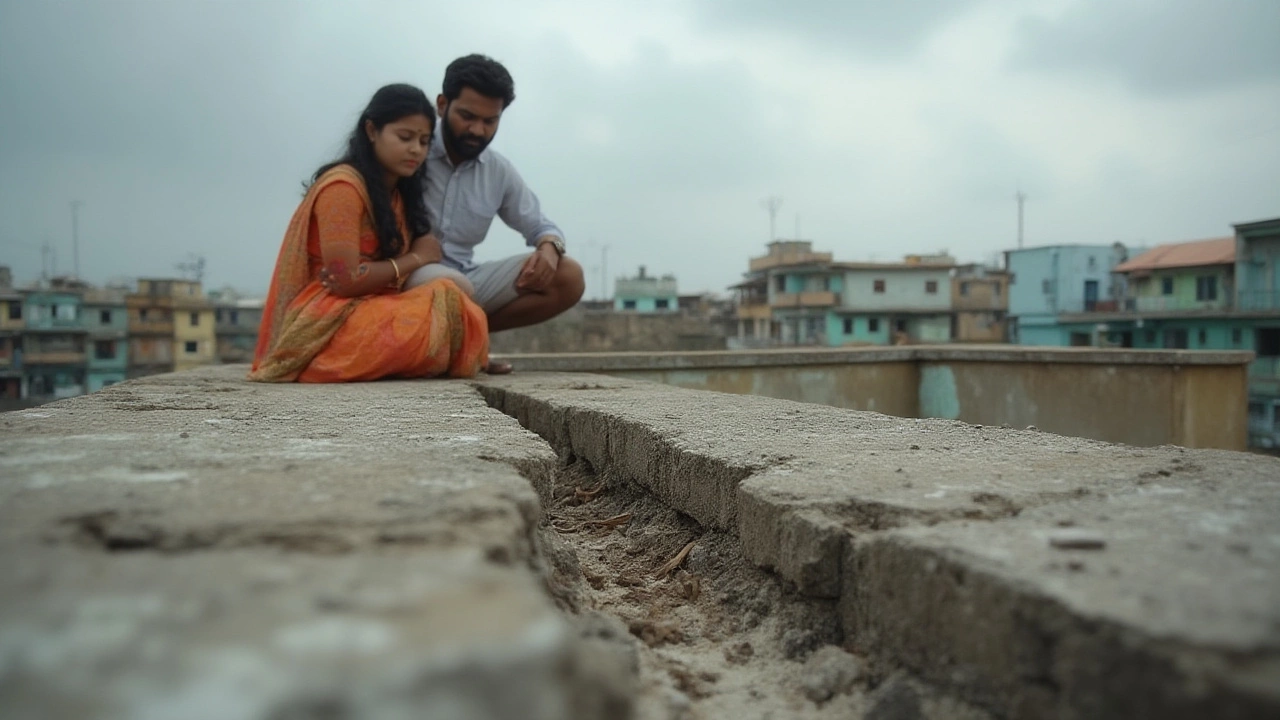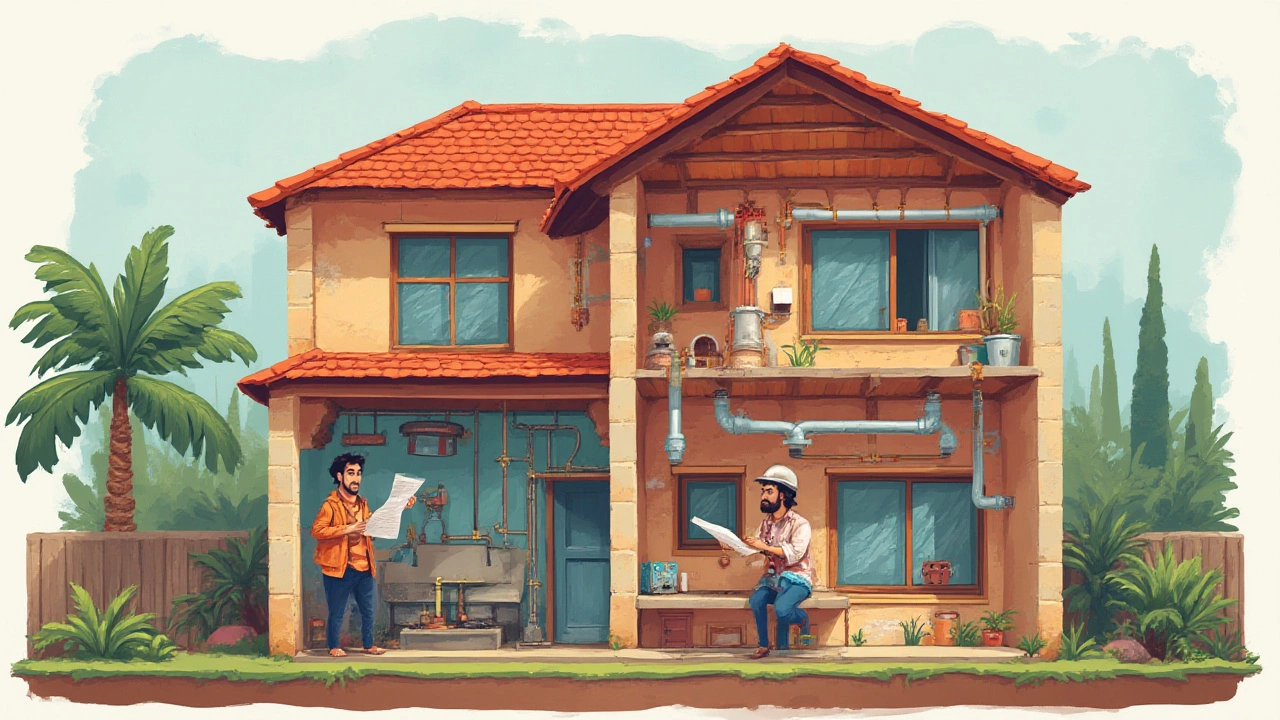What do most homeowners dread the most? It's not the odd faucet drip, or the weird squeak in the floorboards that spooks your dog. It's the repairs that can destroy bank accounts, coming suddenly, often without much warning. If you've ever walked through your house and thought, "Gee, I hope nothing’s catastrophically wrong under all this paint and plaster," you’re not alone. Knowing what could go wrong—especially the big ticket stuff—can make the difference between smart homeowner and financial disaster. Spoiler: everyone thinks roof, but there’s something even sneakier and pricier lurking beneath your feet.
The True Money Pit: Foundation Failures
People often think big home repair means big stuff overhead—like hurricane-hammered roofs, or flash-fried wiring after wild storms. But the true record-holder when it comes to expensive home repairs is actually your house’s foundation. Simply put, when the foundation goes bad, everything else is at risk. If you notice cracks snaking up your walls, doors that stick for no good reason, or windows that jam in summer but glide in winter, you might have foundation trouble. These are clues most folks ignore until it’s too late.
Let’s talk dollars. In New Zealand, foundation repairs and replacements can run anywhere from $15,000 for minor underpinning to more than $100,000 if your house needs to actually be lifted, the soil rebuilt, and everything made true. No other repair hits your wallet like this. The big kicker? Insurance rarely covers it unless it’s earthquake-related. And if you’re in Auckland—where volcanic soils and swelling clay can shift with crazy speed—you’re extra prone. Even a “little” slip can cost you five figures just for a proper structural inspection and engineering report. Imagine pouring that kind of money into the ground, literally, before you even fix a single visible thing.
Here’s a real gut-punch: a recent case near Takapuna saw a modest 1950s home rack up $136,000 in foundation repairs after a slow, hidden leak rotted beams and eroded the ground underneath. All it took was one badly sealed pipe and years of undetected dribbles. You might not see a single symptom for ages—or you might only catch a musty smell or a suspicious dip in the floorboards. This is why builders always warn: never ignore a stuck door or a new crack. Even slight foundation movement can cause walls to split, pipes to snap, and roofs to fall out of alignment. Get a good builder or engineer familiar with Auckland soils to check things out after heavy rain, drought, or quakes.
If you want to dodge a foundation crisis, catch problems early by checking around the base of your home for cracks or signs of water pooling. Make sure your downpipes and drains guide water away, not towards, your house. Clay soils, in particular, grow and shrink as they get wet and dry out—so maintenance is about playing defense. Long term, invest in regular inspections before you ever buy, sell, or renovate. A couple of grand on a good report beats a ruinously expensive repair down the track.

Other Big Hitters: Roofs, Plumbing, and Hidden Nightmares
While the foundation gets the gold medal for cost, roofs are right up there too, especially if you own an older home with concrete tiles or asbestos sheeting. In Auckland, roof replacement usually starts at about $15,000 but can easily double or triple for complex designs or heritage rules. My neighbor needed a full iron replacement after a brutal winter storm—$38,200, not counting the water damage inside. And if you’ve got a tile roof, keep an eye out for lichen, cracked tiles, or leaks after a storm. Once water gets in, the rot can spread fast, even into ceiling beams. Guttering is no joke either—blocked and broken gutters are responsible for more than their fair share of soggy ceilings and ruined paint jobs.
Let’s not forget plumbing disasters. Old galvanized pipes might look harmless, but they can rust inside, narrowing water flow or suddenly leaking behind walls. Re-piping a 3-bedroom house? Budget $12,000–$25,000, depending on the age, size, and access. Underground pipes can cost even more, especially if jackhammers or diggers are needed to chase a leak under the concrete slab. Try getting a plumber to pinpoint a leak behind your tiled shower wall—by the time it shows up as a wet patch, dry rot or mold have usually made a cozy home inside your framing. Quick tip: keep an eye out for unexplained spikes in your water bill; often it’s the first sign water’s going where it shouldn’t.
Then there’s the silent creeper: electrical rewiring. This one sneaks up in older homes, especially ones built before the 1970s, when run-of-the-mill rubber and cloth wiring was common. Fraying wires can cause everything from power outages to fires. Full rewiring? $15,000 and upwards, and that’s just for a smaller house. It’ll take weeks, with ceilings cut open and walls patched back together. Don’t wait for the lights to flicker—get an inspection if you notice burning smells, buzzing switches, or if your fuses trip when using more than two appliances.

Spotting Trouble Early and Saving on Repairs
Most expensive repairs don’t start giant. They begin as little hints—a crack after last winter’s storm, a spot of damp near the skirting board, or your dog suddenly sniffing and barking at the same patch of wall every day (true story with Max last year; turned out to be a slow water leak). So, how do you catch these before your wallet is toast?
- Walk your home once every couple of months. Look for cracks, uneven floors, and any door or window that suddenly sticks or stops lining up right.
- Check the basement or crawlspace. Smell for mustiness or spot for standing water—it shouldn’t be damp, and it shouldn’t ever have puddles.
- Keep an eye on your exterior drainage. Auckland’s rain can pool against walls or foundations fast. Gutters should be clean and designed to pull water away, not towards your base.
- Watch out for new noises in pipes: banging, whistling, or dripping you can’t see. These sounds usually mean trouble is brewing.
- Budget every year for maintenance—not just repairs when things go wrong. A couple of thousand dollars stashed away each year can barely touch a foundation fix, but it’ll make emergencies less painful.
- If you’re buying older, get a pre-purchase inspection by a veteran builder. Make sure they check subfloor, roof cavity, and wiring—not just the visible stuff.
For the data-minded, here’s a handy table showing average repair costs for common big home disasters in 2025 NZD:
| Repair Type | Average Cost (NZD) | Insurance Coverage? |
|---|---|---|
| Foundation repair/rebuild | $30,000–$100,000+ | Rarely (only for sudden events) |
| Full roof replacement | $15,000–$50,000 | Sometimes (depends on policy and storm damage) |
| Plumbing re-pipe | $12,000–$25,000 | No (unless caused by sudden burst, not old age) |
| Electrical rewiring | $15,000–$30,000 | No |
| Leaky basement fix | $8,000–$35,000 | No |
| Wall/ceiling mold remediation | $4,000–$15,000 | Sometimes |
It sounds scary, but the risk is manageable. The difference between a minor fix and a six-figure disaster is in how quickly you jump when something feels "off." I’ve seen plenty of folks shrug off small cracks or leaks, only for their next holiday to turn into a new mortgage for repairs. Make maintenance part of your routine, not just a post-crisis scramble. Keep your eyes open for the signs, do yearly checkups, and don’t be afraid to call a pro if you sense trouble—your future self (and your bank account) will thank you.

Written by Fletcher Abernathy
View all posts by: Fletcher Abernathy